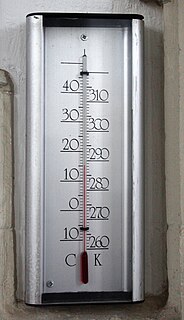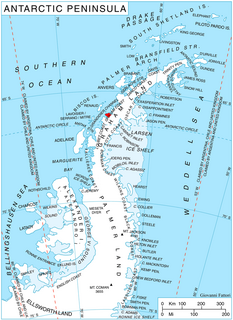Related Research Articles

2D computer graphics is the computer-based generation of digital images—mostly from two-dimensional models and by techniques specific to them. It may refer to the branch of computer science that comprises such techniques or to the models themselves.
In fluid dynamics, turbulence or turbulent flow is fluid motion characterized by chaotic changes in pressure and flow velocity. It is in contrast to a laminar flow, which occurs when a fluid flows in parallel layers, with no disruption between those layers.

In statistics, the standard score is the number of standard deviations by which the value of a raw score is above or below the mean value of what is being observed or measured. Raw scores above the mean have positive standard scores, while those below the mean have negative standard scores.
In music, function is a term used to denote the relationship of a chord or a scale degree to a tonal centre. Two main theories of tonal functions exist today:
In physics, mathematics and statistics, scale invariance is a feature of objects or laws that do not change if scales of length, energy, or other variables, are multiplied by a common factor, and thus represent a universality.

Chabrier Rock is a rock which lies 0.5 miles (0.8 km) southwest of Vauréal Peak in the east side of the entrance to Admiralty Bay, King George Island, in the South Shetland Islands. It was charted and named in December 1909 by the French Antarctic Expedition under Jean-Baptiste Charcot.

Letnitsa Glacier is a 0.9 nautical miles long glacier on Smith Island in the South Shetland Islands, Antarctica draining the southeast slopes of Imeon Range east of Organa Peak and south of Riggs Peak. It is situated southwest of Gramada Glacier and northeast of Kremena Ice Piedmont, and flows southeastward into Hisarya Cove, Osmar Strait. Bulgarian early mapping in 2009. The glacier is named after the town of Letnitsa in northern Bulgaria.

Gramada Glacier is a 1.6 nautical miles long glacier on Smith Island in the South Shetland Islands, Antarctica draining the southeast slopes of Imeon Range east of Riggs Peak, southeast of Madan Saddle and south of Neofit Peak. It is situated southwest of Armira Glacier and northeast of Letnitsa Glacier, and flows southeastward into Brashlyan Cove on Osmar Strait. The glacier is named after the town of Gramada in northwestern Bulgaria.

Armira Glacier is a 1.6 nautical miles long glacier on Smith Island in the South Shetland Islands, Antarctica draining the southeast slopes of Imeon Range southeast of Slaveykov Peak and east of Neofit Peak. It is situated southwest of Dragoman Glacier and northeast of Gramada Glacier, and flows southeastward into Yarebitsa Cove on Osmar Strait. Bulgarian early mapping in 2009. The glacier is named after Armira River in southeastern Bulgaria.

The kelvin, symbol K, is the SI base unit of temperature, named after the Belfast-born and University of Glasgow based engineer and physicist William Thomson, 1st Baron Kelvin (1824–1907). The Kelvin scale is an absolute thermodynamic temperature scale, meaning it uses absolute zero as its null point. It was developed by shifting the starting point of the much older Celsius scale down from the melting point of water to absolute zero and its increments still closely approximate the historic definition of a degree Celsius, but as of 2019 the scale is defined by fixing the numerical value of the Boltzmann constant k to 1.380649×10−23 J⋅K−1, and the temperature in Celsius is defined as the temperature in kelvins minus 273.15, meaning a change or difference in temperature has exactly the same value when expressed in kelvins as in Celsius, absolute zero is 0 K and -273.15 °C exactly, and pure water freezes very close to 273.15 K and boils close to 373.15 K at standard atmospheric pressure

Temperature is a physical quantity that expresses hot and cold. It is the manifestation of thermal energy, present in all matter, which is the source of the occurrence of heat, a flow of energy, when a body is in contact with another that is colder or hotter. Temperature should not be confused with heat.
In snakes, the canthals are the scales along the upper surface of the canthus rostralis. They are located behind the level of the prenasal/postnasal suture and before the supraocular. They are also described as being located along the edge of the crown between the internasals and the supraoculars. If these are large scales that contact each other along the midline, they are more properly referred to as prefrontals.

The Reynolds number helps predict flow patterns in different fluid flow situations. At low Reynolds numbers, flows tend to be dominated by laminar (sheet-like) flow, while at high Reynolds numbers flows tend to be turbulent. The turbulence results from differences in the fluid's speed and direction, which may sometimes intersect or even move counter to the overall direction of the flow. These eddy currents begin to churn the flow, using up energy in the process, which for liquids increases the chances of cavitation. Reynolds numbers are an important dimensionless quantity in fluid mechanics.

Altimir Glacier is a 4.8-kilometre (3.0 mi) long and 5.5-kilometre (3.4 mi) wide glacier draining the north slopes of the Osterrieth Range on Anvers Island in the Palmer Archipelago, Antarctica. It flows northwards to enter Dalchev Cove in Fournier Bay east of Studena Point.

The complexe sonore is an octatonic chord consisting of minor third relations.

Bistra Glacier is 1 nautical mile long and 0.4 nautical miles wide glacier on the northwest side of Imeon Range on Smith Island in the South Shetland Islands, Antarctica. It is situated southwest of Chuprene Glacier and northwest of Dragoman Glacier, drains the west slopes of Mount Foster and the north slopes of Slaveykov Peak, and flows northwestwards of Zavet Saddle to enter Drake Passage south of Garmen Point.

Hoek Glacier is a glacier flowing into Dimitrov Cove northeast of Veshka Point on the northwest coast of Velingrad Peninsula on Graham Coast in Graham Land, Antarctica, southward of the Llanquihue Islands. It was charted by the British Graham Land Expedition under John Rymill, 1934–37, and was named by the UK Antarctic Place-Names Committee in 1959 for Henry W. Hoek (1878–1951), a pioneer Swiss ski-mountaineer and author of one of the earliest skiing manuals.

Thomas Glacier is a roughly Z-shaped glacier which drains the southeast slopes of Vinson Massif and flows for 17 nautical miles (31 km) through the south part of the Sentinel Range, Ellsworth Mountains, leaving the range between Doyran and Petvar Heights south of Johnson Spur.

Aster Glacier is an Antarctic glacier descending the east slope of Craddock Massif and flowing between Elfring Peak and Willis Ridge to Thomas Glacier in the Sentinel Range, Ellsworth Mountains in Antarctica. It was named by the Advisory Committee on Antarctic Names in 2006, after Richard Aster, Professor of Geophysics and Department Head of Geosciences at Colorado State University, whose research in Antarctica includes volcanological studies at the Mount Erebus volcano observatory on Ross Island, glaciological, oceanic, and tectonic seismic source studies, seismic tomography, ice shelf studies, and the coupling of solid Earth geophysics and Antarctic ice sheet evolution.

Orizari Glacier is the 3 nautical miles long and 0.5 nautical miles wide glacier in Veregava Ridge on the east side of Sentinel Range in Ellsworth Mountains, Antarctica. It is draining the north slopes of Mount Waldron, and flowing north-northwestwards to join Dater Glacier west of Sipey Bluff.
References
- ↑ Campbell JA, Lamar WW. 2004. The Venomous Reptiles of the Western Hemisphere. Comstock Publishing Associates, Ithaca and London. 870 pp. 1500 plates. ISBN 0-8014-4141-2.
- This article incorporates material from the Citizendium article "Intercanthal scales", which is licensed under the Creative Commons Attribution-ShareAlike 3.0 Unported License but not under the GFDL.